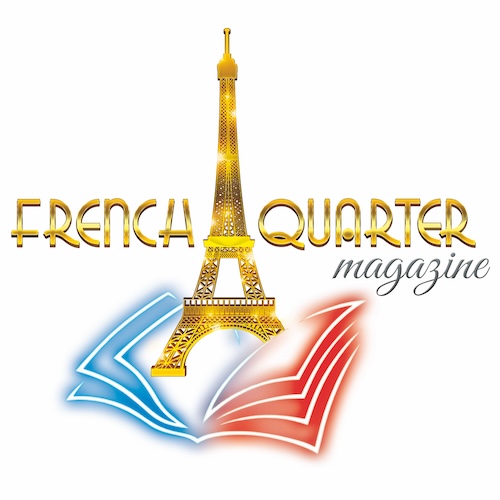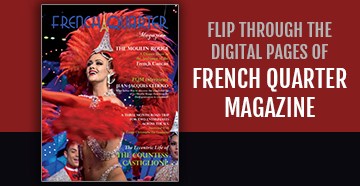Chicago’s 19th Century ‘’Little Québec‘’
Header Photo: [Edward F. Dunne and an unidentified man (sitting) and Z. P. Brosseau (standing) each wearing dress suits with ribbons on their jacket lapels].
Photo Credit: Explore.chicagocollections.org
Chicago has historical ties to Québec dating back to Joliet and Marquette exploration of 1673. Early fur traders like Jean Baptiste du Sable and Antoine Ouilmette established trading posts on the shores of Lake Michigan. The region that would become Chicago was officially part of Québec from 1774 to 1783. (1) At no time was the French Canadian presence more perceptible than the second half of the 19th. Century, with an estimated 25,000 Québecois living there served by four French speaking parishes, and several French langage newspapers. (2)

Photo Credit: L’Or Artiste.
In 2022 the Alliance Française de Chicago will observe its 125th. anniversary. One of the 1897 founding board members and second president of the Alliance Française was Zénophile Pierre Brosseau. Z. P. Brosseau was born in La Prairie, Québec in 1840 and emigrated to Chicago in 1860. He would make his fortune as a grain investor on the Chicago Board of Trade, engage in Chicago politics and be a patron of the French speaking community of Chicago. His obituary suggests that for his work with the French of Chicago he was made Chevalier of the Legion of Honor by the president of France. ( 3) There is no record that Z. P. Brosseau had any interaction with fellow expatriate, Louis Honoré Fréchette but it is reasonable to assume they knew each other during five years that Fréchette resided in Chicago. Both Brosseau and Fréchette were benefactors of the French Canadian community in Chicago.
Québec poet, Louis Honoré Fréchette wrote of his self imposed exile in La voix d’un exilé. (4) He left Lévis, Québec disillusioned with the local politics, and took refuge in Chicago from 1866 to 1871. We know that he settled in Saint Joseph Parrish in the Brighton Park area of Chicago. He would repatriate to Lévis after the Chicago Fire and find success both as a poet and politician. His brief exile in Chicago brought him success also. He was instrumental in the formation of the local chapter of the benevolent Saint-Jean-Baptiste Society (5), Fréchette contributed as a writer to the Chicago French newspapers L’Observateur and L’Amérique. He founded the later and served as editor.
The railroad that brought him to Chicago gave him employment as Secretary of Administration at the Illinois Central Railroad Department of Lands. Fréchette wrote several plays in Chicago but they were destroyed in the Chicago Fire. Dr. Elzéar Paquin tells us that a play Fréchette wrote in Québec, Felix Poutre (1862), was popular in Chicago. The historical based play was sympathetic to the Québec uprising of 1838 against the British. (6) Fréchette, while on a brief return to the Québec region south of the Saint-Lawrence in 1870, was an advocate of annexation to the U.S. He would soon after repatriate to Lévis and serve as member of the Canadian parliament (1874-1878).
The following archive program is about Louis Fréchette. It is from a Dec 18, 2019 broadcast in Québec. The first 7 minutes are news of that day.
Elzéar Paquin has left us a record of the French Catholic community of Chicago during the second half of the 19th century. La colonie Canadienne Française de Chicago. (7) The purpose of this pamphlet was to dispel the misconception that French Canadian immigrants were socially isolated . In Paquin’s words:
En Canada, on n’était sous l’impression que les canadiens-français émigrés dans le Michigan, le Wisconsin, l’Illinois, et les autres états de l’Ouest, ne formaient pas de groupes importants, se trouvant trop disséminés partout.
Some prospered, and after a generation many simply assimilated into a greater Chicago society. But most everyone had as original port of entry a French-Canadian parish. Paquin himself emigrated from Québec in 1883. He was born in Saint-Raphael in 1850, attended seminary school in Montréal and then medical school at Victoria College of Medicine in Montréal (1878). In 1889 he established in Chicago a French newspaper, Le Combat. He was active as a French Canadian advocate in the U.S. Before settling in Chicago he was an organiser of other local chapters of the Saint-Jean-Baptiste Society in the U.S. Fréchette and Paquin were not in Chicago at the same time and the only inference to Fréchette’s plays Félix Poutre. The play was mentioned to illustrate how a contemporary of Paquin, Antoine Grignon, supported the Norte-Dame parish with the proceeds of his French theatre group.

https://portal-ccc.s3.amazonaws.com/media/images/newberry/115/zs2mj9h.jpg
The first of Chicago’s French-Canadian parishes was Notre-Dame, established in 1866, destroyed in 1871 and reconstructed in the 1880’s. Three members of the organising committee for Notre-Dame were founding officers of the Chicago chapter of Saint-Jean-Baptiste society. They were:
president, Olivier Decelles, vice president, Cyrille Lebeau and treasurer, Ephrem Watier. Paquin devotes a chapter to the discussion of Notre-Dame, but a more comprehensive study can be found in a 1936 master thesis documented by Catherine Dempsey, a graduate French student at Loyola University of Chicago. Her thesis, La Paroisse Notre-Dame de Chicago was presented for her masters degree in French, but demonstrates the discipline of a trained historian. (8)
Another member of the Notre-Dame organising effort was Toussaint Ménard, a contractor born in Saint-Luc, Québec in 1818. He would arrive in Chicago about 1851, shortly after the completion of the railroad system from the east. More about Ménard in discussion about Saint-Ignatius College, Chicago (subject of future article). With the completion of the railroad system Chicago was experiencing hyper-growth and a construction boom. The population in 1850 was 29,963 and grew to 1.5 million by 1900. Québecois architect, Louis-Jean Baptiste Bourgeois was active in Chicago
in the 1880’s and 1890’s. See: French Quarter Magazine article September, 21, 2020. ( 9 ) Paquin makes no reference to Bourgeois and that maybe because Bourgeois did not involve interact with the Québec community in Chicago.
Two Quebecois painters Siméon Alary and his daughter, Honora Alary arrived in Chicago in 1902 Both came from the region of Québec City and first located to Notre-Dame parish. They were portrait artists and it is assumed that they would have serviced their fellow parishioners. About 1920 the Alary family moved to the exclusive community of Oak Park, just west of Chicago. This was where Frank Lloyd Wright designed his home as well as many of his neighbours. It would have been an ideal base of operation for portrait artists. The National Museum of Beaux-Arts of Québec is looking to expand their collection of the two artists, but portraits become family heirlooms and do not enter the art market.
1. The terms French Canadian and Québecois are inter-changeable in this article. In 1764 the Québec act established the boundaries of Québec to be most of the present provinces of Ontario and Québec, and all lands east of the Mississippi River and North of the Ohio River. In 1791 eastern Canada was divided into Haut and Bas Canada. Bas Canada being much of present Québec and Haut Canada most of present Ontario. The name Québec was re-attributed to the present region with the formation of the Dominion of Canada 1867. French Canadian is a term for all French speaking Canadians although most have never abandoned the identity of Québecois. In the first half of the 19th. Century there was a movement in Bas Canada for annexation to the U.S. It was for economic reasons, but two major obstacles kept the movement from gaining much support. One reason was fear of being drawn into the imminent American civil war. The other was the fear of American anti-Catholicism.
2. La Presse Française De Chicago par Louis-Philippe Cormier (1957) page 366 Free online.
https://www.erudit.org/en/journals/haf/1957-v11-n3-haf2020/301847ar.pdf
3. https://www.newspapers.com/clip/43098874/obituary-for-z-p-brosseau-aged-79/
4. See book on line ,free https://beq.ebooksgratuits.com/pdf/Frechette-Poutre.pdf
5. I discovered a reference to a meeting of the French Benevolent Society in the Chicago Tribune ( May 26 1863 ) This was a local Chapter of the French Benevolent Society of Philadelphia .
See:
http://www2.hsp.org/collections/Balch%20manuscript_guide/html/french_benevolent_society.html
The Saint Jean Baptiste Society was founded in Montréal in 1843 to advance the interests of francophones of Lower Canada. Fréchette’s mission to Chicago suggests that the French Benevolent Society was not serving the needs of the rising French Canadian population. An open question is did the Saint-Jean-Baptiste Society aid Québecois to locate to the United States or was its purpose to raise funds from those same expatriates to support the Québecois that remained home
6. http://www.biographi.ca/en/bio/frechette_louis_13F.html
7. See pamphlet on line, free:
https://fr.wikisource.org/wiki/La_colonie_Canadienne-Fran
8. See thesis free online: https://ecommons.luc.edu/luc_theses/135/
9. https://frenchquartermag.com/index.php/2020/09/21/art-exhibit-tributes-quebec-architect-louis-jean-baptiste-bourgeois/?lang=fr.
The National Museum of Beaux Arts of Québec wants to expand its collection of Siméon and Honora Alary.
https://collections.mnbaq.org/fr/artiste/600002546
https://collections.mnbaq.org/fr/artiste/600017280
If someone believes they have a portrait, done by either artists, of an ancestor who resided in the Notre-Dame parish in the early 20th century they should contact:
Special thanks to Ellen Skerrett, pre-eminent authority on the history of the Chicago Catholic Church.
https://www.chicagotribune.com/news/ct-xpm-1997-09-14-9709140174-story.html
Alex Severino who has done extensive research on the history of St. Ignatius High School has also contributed to this article. Both also have contributed to a future article about Holy Family parish in Chicago and the work of three Québecois in its construction.

This painting is now part of the collection of the French Department of Saint Michael’s College, Vermont.
Photo Credit: L’Or Artiste.
Images:
1. Painting of the courtyard of the Alliance Français de Chicago by L’OR Artiste. The painting is on permanent display with the French Department of Saint Michael’s College in Colchester, Vermont.
2. Photo of Z.P. Brosseau, president of the Alliance Français de Chicago (1901-1908)
3. Photo of Notre Dame parish, Chicago























Félicitations pour cette recherche. L’église Notre-Dame de Chicago a de très beaux vitraux qui mériteraient un article.
La Société française de bienfaisance mutuelle de Chicago fondée en 1861 était ouverte à tous les Français et descendants de Français. C’est pour cette raison qu’en 1866 une nouvelle société a été fondée sous la présidence du consul de France et ouverte seulement aux personnes nées en France.
Merci pour votre commentaire intéressant, Annick ! Désolée pour la réponse tardive. Nous avons dû restructurer notre équipe. Nous sommes ravis que vous ayez apprécié notre recherche. L’église Notre-Dame de Chicago semble en effet être une magnifique structure avec ses vitraux. Nous prendrons certainement en compte votre suggestion pour un article à l’avenir.
Quant à la Société française de bienfaisance mutuelle de Chicago, son histoire semble fascinante, et nous apprécions que vous l’ayez partagée avec nous. C’est intéressant de voir comment elle a évolué au fil du temps pour refléter les changements dans la communauté française de Chicago. Nous pourrions explorer davantage ces sujets dans nos futurs articles. Merci encore pour votre contribution précieuse !